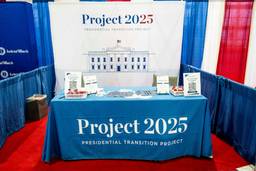How a News Voucher System Could Revitalize American Journalism
We can rebuild the local journalism industry by having the government give people the means to pay for news.
Mark Histed

In May 1864, in the midst of the Civil War, abolitionist William Lloyd Garrison wrote in his anti-slavery publication The Liberator:
“For my own part, when I remember the trials through which he has passed…that he has expressed his earnest desire for the total abolition of slavery… I do not feel disposed, for one, to take this occasion, or any occasion, to say anything very harshly against Abraham Lincoln.”
Garrison’s pro-Lincoln stance was supported by a government journalism subsidy — a reduced postage rate that the U.S. Postal Service accorded to newspapers at the time. The Liberator wasn’t alone, as all newspapers could take advantage of this public subsidy. Other papers that advocated for ending slavery, like Frederick Douglass’s North Star, also used this public benefit. Labor papers benefited too, and publications like the Mechanic’s Free Press used the subsidy, along with advertising and subscription revenue, to advocate for the end of child labor, fair pay and universal education for every child.
Today, the U.S. news industry doesn’t receive much public support. The postal subsidy for periodicals has been greatly reduced over the last century, and other forms of public subsidy have not kept pace. To support U.S. journalism, lawmakers should embrace a new approach — giving U.S. residents vouchers to directly fund journalism outlets of their choice.
The United States is an outlier among democracies in how little we spend to fund public media: about $3 per person per year, many times less than countries like Germany ($142), Norway ($111) and Japan ($53).
Other democratic countries have decided that journalism should receive public subsidies, in part because journalism is an “information good”, and therefore it is difficult for market mechanisms alone to sustain high levels of journalism. A person reading a story usually doesn’t know how much value an article will have for them until it’s read, and once it’s been read there is little incentive to pay for it. These are fundamental obstacles to setting prices for news, and they make markets for news inefficient. These market failures help push news outlets to prioritize articles that maximize clicks and engagement — playing down stories that serve to inform citizens about their society, and instead focusing on entertainment and virality.
The problems with a market-driven journalism industry have played out in the decline of local news in America. A significant reason for that decline is that, in the absence of public subsidies, U.S. news has for decades relied heavily on advertising. Classified advertising, once a major driver of local newspaper revenues, has been nearly eliminated by the internet. And today, tech companies like Google and Facebook sell ads that appear on digital news sites, reducing publishers’ ability to benefit from selling directly to advertisers.
To strengthen American journalism, we should subsidize news outlets in a way that allow them to reduce reliance on clicks and advertising. One of the components of the U.S. House version of President Joe Biden’s Build Back Better Act is a tax credit to support local news outlets. That would be an excellent start, though the bill is now stalled in Congress. Tax credits alone, however, seem unlikely to increase diversity in journalism, reduce corporate consolidation in the news industry and spur the creation of new outlets.
There is an alternative. Another public funding system — a news voucher system—could both support new and diverse outlets while also rebuilding existing local news sources.
Empowering citizens to support local news
Under a news voucher system, citizens would receive several “vouchers” that can be given to local news outlets in return for a subscription. The government would then directly pay the news outlet for the value of the voucher. News voucher proposals to support journalism in the United States have been discussed for nearly 20 years, though so far have not been implemented.
But now we have new evidence that voucher systems can work well to allocate public funds to meet the needs of a large group of diverse citizens. In 2015, the city of Seattle pioneered a Democracy Voucher program for public campaign finance, in which each citizen receives vouchers to give to the candidate of their choice and the city then pays the candidate the value of the voucher. Since the establishment of the program, Seattle has seen increases in the number and diversity — in terms of income, race and age — of city residents who participate in funding candidates for local office. And the voucher system now is an important part of political campaigns. This year, six of eight city-wide candidates in Seattle’s general election used vouchers, and the two mayoral candidates both reached the maximum $400,000 voucher fundraising limit.
This kind of news voucher program is perfectly suited to be implemented at the state level. As American news has concentrated in the hands of a smaller number of national outlets, state issues receive less attention and state-level candidates have less of a local platform. States implementing a news voucher program would not just boost local journalism, but also enable local outlets to do more of their own reporting and analysis of federal issues.
Encouraging outlet diversity and transparency
A news voucher system has the advantage of being content-neutral — citizens, not governments or politicians, decide who receives the funding. A voucher system can therefore include a wide definition of what constitutes a news outlet. (One such definition, involving outlets that “publish original content relating to news and current events,” is provided in the federal bill.)
Such a system could be designed to encourage vouchers to be distributed across various publications while supporting both existing and new outlets. A cap can be placed on how many vouchers a single outlet can receive, and each citizen could be provided with a number of vouchers, each required to go to different outlets. Provisions like these would help ensure that vouchers are spread out across outlets and not simply accumulated by media industry behemoths.
A voucher system can also help ensure that citizens can access the information they need in order to decide which news outlets to support. The identity of who controls a news outlet should be transparent. A voucher system can require, as a condition of taking voucher dollars, that individual owners of each news outlet be disclosed — as was recently required of federal government contractors.
To take one state example, if Illinois were to implement such a program, some residents might use their vouchers to support the newly non-profit Chicago Sun-Times, while residents in other parts of the state might use their vouchers to fund existing papers in smaller cities, from Decatur to Evanston. Others might use their vouchers to fund news startups across the state — digital, print or audio; liberal, left or conservative. Regardless of their income level, residents would now be able to use vouchers to access and subscribe to outlets of their choosing.
Restoring public debate
But what about outlets that publish and spread inaccurate or deceptive information? Should a news voucher system try to build in mechanisms to prohibit this? Some useful lessons can be drawn from Stockton, Calif., where a digital startup, the 209 Times, has risen to play a large role in local news, and has been accused of writing stories that “included some exaggerations and untruths” about political candidates. The 209 Times founder Motecuzoma Sanchez has even admitted to, at times, going “below the belt.”
Policymakers might be tempted to try to add provisions to a voucher program that regulate misleading content. But a closer look at Stockton reveals that the 209 Times rose in part to fill a hole left by the shrinking of the Stockton Record—a local newspaper, now owned by media giant Gannett, that years ago had 85 people in the newsroom and by 2019 employed just 11.
A news voucher system could help adequately fund the Stockton Record, allowing it to staff up and expand its local coverage — and even allowing the paper or other news voucher-funded media to report on any inaccuracies put out by the 209 Times or other outlets. In short, a news voucher system would deal with misinformation by strengthening trusted journalism. This would improve American public debate by allowing robust journalism — which is costly to produce — to compete on a more even playing field with news outlets that today rely more on high-engagement (and often less carefully-researched) content.
Seattle’s voucher program not only substantially increased the number of people participating in electoral campaigns, but also opened the door to candidates who didn’t have access to wealthy donors, helping revitalize democracy. The Liberator, William Lloyd Garrison’s postal-subsidized paper, also increased the number of voices in U.S. journalism — it began as an outsider publication that helped bring abolitionist views into the broader U.S. national dialogue.
Today, a news voucher system can elevate the voices of under-heard groups, and both democratize and rebuild U.S. journalism. By bringing U.S. public news spending in line with other democracies and distributing funds via vouchers, we can create a vibrant news ecosystem that serves a broad cross-section of local communities.
Mark Histed is a contributor to the Democracy Policy Network. Find him on Twitter @mark_histed



